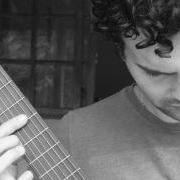All Activity
- Past hour
-

Waltz No.1 in A Minor for Piano
JorgeDavid replied to JorgeDavid's topic in Piano Music, Solo Keyboard
Thank you so much for letting me know about the notation error, @Kvothe! Because of the grouping the first bar (and similar ones) might be understood as 6/8. I did not know it but now I totally understand it. Thanks for noticing! I will fix it for the final version. Also, regarding the tempo, I guess I could get rid of tempo marking since the expression marks such as "agitato" might be enough to convey the mood of the piece. Sadly, I do not know any pianist, so I cannot get real-life feedback, but I will try to find out about how tempo markings are normally used! For this piece, do you have any particular suggestion about which tempo marking would fit best? Thanks for commenting! -

Waltz No.1 in A Minor for Piano
JorgeDavid replied to JorgeDavid's topic in Piano Music, Solo Keyboard
Thank you so much for the feedback and I am glad you liked it, @TristanTheTristan, I really appreciate it! Regarding the tempo, I am curious about what is the convention with Waltzes. As far as I know, I am using the metronome at around 180bpm if I consider each quartet note as the beat (so three beats per measure). Or is it maybe common in Waltzes to consider the bpm as the first beat of each measure or to consider other particular measure (such as feel of the music)? Thanks for all the feedback of the parts you liked the most! And yes, there is a few notes that are different because I am constantly changing a few notes here and there and I will record it when it is completed. But 99% of the piece is going to stay as it is. Regarding the bar 93, I understand it is a weird bar. It is just a repetition of the same material already played (first in Amaj, now in Dmaj), so the bass note should be A, to have a diatonic F#min chord with the third on the bass moving diatonically. However, in that particular context I like much more the A# in the bass, I am not sure why. It does create a F#7 chord with the natural A on top. The fact that the bass moves from A# to G is strange, but I do like it. But I can imagine most performers would actually change the A# into an A thinking it is a mistake 😅 I am aware of that bar and might consider changing the bass note to the A. But for now I like it better this way. Thanks for noticing it! I also enjoy that part and, both the Maestoso together with the set of bars that you pointed out are my favorite part of the piece! Glad you enjoyed it too! Yes, the ending is quite overwhelming. I am not good at writing Codas but I am going to extend it for the final version, even if it is only a couple of extra bars. The ending now sounds too rushed and probably a few more bars to let the ending breath will improve it. 8.5/10 is really good!! Thank you so much for your encouragement and the nice words!! Thanks for listening and commenting! -
Henry Ng Tsz Kiu started following lux moritura (short intro music)
- Today
-
EmotionallyChargedMusic started following lux moritura (short intro music)
-
JP S. started following Schumann orchestration (Child Falling Asleep)
-
Schumann orchestration (Child Falling Asleep)
JP S. replied to Alex Weidmann's topic in Orchestral and Large Ensemble
Hey Alex! First of all great job working at orchestrations. I saw you’ve done a number of them, and as someone newer to composing I think they’re a high quality way to practice and grow. I myself do arrangements of pop songs for Pep Band, which is a very similar process, so I get the concept. I think you’ve done a high quality job in many areas. You’ve got the piece generally laid out, with variations in timbre. The repetition had a semi-lulling effect, yet there was also variation to keep up interest. You’ve got generally nice timbre choices and pairings. I can tell you have a composer’s intuition:) It was a pleasant piece to listen to overall, so you didn’t do terribly:) To provide what I can to hopefully help you take it to the next level, I listened to your piece several times & a recording on YouTube of someone playing the piano version. In my opinion & sense, the original piece edges on a little too repetitive, but it does gain traction at about measure 8 when things start feeling developmental. It does have a kind of lulling effect though, so I think he achieved his purpose, but in my preference I wouldn’t encourage the composition to have any more length or repetition. Here’s my understanding of the original: it seems to actually have two melodies going on simultaneously, playing on each other the whole time, with the other notes providing warmth & fullness. He does a 4 bar A theme twice, then changes to the relative major on a big chord. I liked how the pianist did a little rubato at the transition, because otherwise it would just sound like a major sudden change with no warning, which would feel offputting here. Then he has a 4 bar cascading, what feels like an almost inversion of the previous, repeated (similar to the beginning). It feels like a reprise, concluding & transitioning. That section has large moving chords on the downbeats, and can kind of feel like the ending music of a movie scene. Then he has a iii chord, which I thought he was going to modulate to that key, but he continued developing for 4 bars ending on the B (V of E again). But he goes into a CM7 chord with the melody for 4 bars, the bVI no 5th, which to me feels minor. It ends on a B chord with cascading notes that feels like a cadence, into the final section. It’s an 8 bar near restatement of the A theme, which feels relieving and longed for. Then it ends on the iv, with sudden long chords, which to me just makes me question if whether the child fell asleep or not. Relative to your composition, and recognizing you’ve already done a good job and my comments are just trying to help you get that last 10% to make it pop, I think your timbre changes felt simultaneously too much and too little. At first I didn’t know what to comment, but I think you almost tried to apply film score, quick drastic timbre changes to a slow, lullaby-like, repetitive piece. I think if you were more clear & distinct about your timbre changes, especially using them on the 8 (or less often the 4) bar marks & to mark harmonic changes where he has them, that would help encourage the natural cadence of the piece. My two favorite timbres you used were the low woodwinds with clarinet melody, and the string ensemble. I also think the horn melody was a nice additional change, but it was much brighter & more poignant than the other timbres, so I think it would fit more on the 2nd set of 8 bars, or other more in-your-face moments. Whatever you do, keep the melody on one instrument through the phrase instead of changing so often. The second thing that would help would be the transitions. Ryan Leach on YouTube has a great video on writing transitions: I think both introducing newer elements earlier, and utilizing the more prominent changes (like the large, slow, cascading chords at m.8) in a prominent way will both make the sections fit more together like a natural puzzle. The last minor thing would be trying to make the upper & lower melodies equally as present, with the harmonies quieter behind. It’s a small thing that would make a big difference in this piece, but I think the flute was too loud, and I lost the lower melody over time. Great job, and please let me know if these helped at all. Happy composing! -
I wouldn’t say anything negative about 5, I more so think a fast 4th (between the current 2nd and 3rd) movement would do a lot of justice to this piece. The last movement you showed has lots of beauty to it, my only consideration is many beautiful movements in a row detracts from their beauty. When you are able to compare the beautiful and the “uglier” movements, it makes those beautiful moments all the more moving, and same with the fast movements. I honestly would gladly listen to any of your current movements in person if I had the chance, they are wonderful. Just because you wrote something that is hard, doesn’t mean its bad, otherwise most of the best music would be no good. I will say one thing, in my opinion (as a vocalist) if you have a solo voice singing with an orchestra, you should utilize the voice at least 60% of the time. This is not something that I’m totally sure everyone will agree with me on but I’ll explain my reasoning. In a concerto or soloist oriented orchestra performance, the soloist must stand infront of the orchestra. Particularly for singers, their job is to emote and show the emotions of the music. When you have a singer on the stage, they are the only face not in their music. They look directly at the audience. Long interludes of 2+ minutes are incredibly difficult to keep the audience’s attention. And if the singers sits and then later stands it cannot be acted through. Film music gets away with the soprano coming in out whenever they want, but I believe this should not happen on stage, simply out of a desire to tell a story, in what I believe, is the most convincing way. I’d be curious on other people’s thoughts on this.
-
Sonata no 18 in F sharp major ( Binary form)
Vasilis Michael replied to Vasilis Michael's topic in Piano Music, Solo Keyboard
"Thank you so much, I’m really glad you liked it. In the past few years, I had really explored his sonatas and I was blown away by how incredibly stylish and ahead of his time they were. He truly became the greatest source of inspiration for me. So far, I’ve written 20 sonatas in this style, although in most of them there’s a mix of Scarlatti, Mozart, and Schubert. But the combination left me amazed by the result." -
Henry Ng Tsz Kiu started following Sonata no 18 in F sharp major ( Binary form) and Waltz No.1 in A Minor for Piano
-
@PeterthePapercomPoser, thank you for listening and your helpful (and very kind) feedback!
-
EliTheCreature joined the community
-
Sonata no 18 in F sharp major ( Binary form)
bkho replied to Vasilis Michael's topic in Piano Music, Solo Keyboard
Very nice. I'm a big admirer of Scarlatti myself, definitely hear the inspiration here. - Yesterday
-
PeterthePapercomPoser started following Sonata no 18 in F sharp major ( Binary form)
-
Thank you for your feedback @PeterthePapercomPoser! The clarinetist who played it is named Jacob Wolf. He only made a home recording; Unfortunately, the piece was never premiered in any recital or concert. I don't remember which competition I entered this piece in, but I'm sure it didn't win any awards :).
-
Vasilis Michael started following Sonata no 18 in F sharp major ( Binary form)
-
Here is one of my favorite sonatas in binary form, inspired by the colossal Scarlatti, who is also the reason I started composing music systematically over the past two years. It’s a blend of Scarlatti’s style but also includes elements from other classical composers. A very playful sonata with quite a few unexpected modulations that make it even more humorous… I hope you enjoy it.
-
Sarmadk4 joined the community
-
.thumb.png.8b5b433a341551e913a34392660bc95b.png)
Waltz No.1 in A Minor for Piano
PeterthePapercomPoser replied to JorgeDavid's topic in Piano Music, Solo Keyboard
Hey @JorgeDavid! Long time no see! I think this is a very quaint little waltz that you've performed yourself! I don't think you're having as many troubles performing it as you make us think saying that you "need more practice"! LoL My favorite parts of this are the unexpected cross relations between the melody and bass like in bars 4 and 20. In bar 4 you have a G natural in the melody contradicted by a G# in the bass while in bar 20 you have a D in the melody with a D# in the bass - great idea! Usually these kinds of cross relations would be heard as mistakes in A minor but you used them deliberately and made them sound intended and I really enjoyed them! Great job and thanks for sharing! P.S.: I think even if you were using a notation program to realize a rendition of this instead of performing it yourself - in Musescore, for example, I would liberally use rit.'s and accel.'s to make the tempo sound more rubato and humanized. -
PeterthePapercomPoser started following Waltz No.1 in A Minor for Piano
-
As Tristan mentioned, the tempo is slower than presto. When Chopin wrote his, he rarely used a tempo marking. The engraver added them later; or it was up to performer. So my suggestion would be is: have a pianist play through and then ask for feedback from them. Ask him or her, what tempo should you mark and other feedback. I notice the notation error. You are using a hemolia: a doted quarter followed by three 8ths grouped together. do not that. It makes it appear you are in 6/8 and not in 3/4.
-
Waltz No.1 in A Minor for Piano
TristanTheTristan replied to JorgeDavid's topic in Piano Music, Solo Keyboard
Hi there. Let's go to the point right away. Firstly, Nice waltz! I really enjoyed listening. There seems to be a problem too, by the start. It is definitely not Presto. The Bpm is more like 112 (I use a metronome). Presto is kind of like 180 Bpm. If you want a Presto, I would recommend writing something like the following: Presto (c. 112). Secondly, I could definetely hear Chopin here! The ideas at bar 18 and 38 is also very good. Thirdly, cantabile part seems nice. The immediate transition to G Major and back to A minor is extremely nice. Although in a Major Key beginning, it still keeps a melancholic atmosphere. The bars 49-56 area's texture is favorable. Bar 62 is played wrong. You forgot to play the (appogiatura) B natural. Fourthly, From Vivace, there is a Key signature change, which I like. Again the tempo is played wrong. Bar 93 does not make sense Lastly, from maestoso, I really like the texture. Bar 116 is one of my favourite bars in this composition! Then, it is go to the start up to the Coda mark. The coda is not long enough, though. Could be longer. In conclusion, You have great composition ideas, but you still need more practice. Overall, I would rate this piece of music a 8.5 out of 10. Have a nice day! -TristanTheTristan -
Somehow still existing existentionally in this existence of existences as an existentially existential existence.
-
Hello everyone! I composed a waltz for piano during the weekend. I wanted it to be "easy" to play so I composed it with an accompaniment that does not need jumps or the use of the pedal. It is still hard to play for me, so, while I practice, I leave it here with my initial live performance until I can play it better (it would sound awful with midi). My main concerns is always with the form, as I am not sure how do transition best between sections, when to repeat things or let them go, etc. So any feedback about that is more than welcome. The piece is in the form ABCBA. A is the main theme in A minor, which is repeated at the end. It is a frantic and agitated theme (and needs to be played rubato). B is a modulatory section and needs to be played without rubato and with the melody "singing". It is based on a long chromatic descending bass line so it is highly chromatic and there might be many compositional mistakes in this section. While it is the easiest section, I have troubles played it beautifully. You can listen to the only time I played it as well as I wanted in 2:01 from the audio. C is a simple lyrical theme in A major. The audio is really bad, it is based on different recordings so the quality of the sound changes a little. When I practice everything and have a finalized score and audio rendition I will update it! Hope you like it and any feedback is more than welcome! Thank you!
-
Good guess Peter! It was inspired by Vivaldi's famous A minor violin concerto (RV356). I've even lifted a fragment of one phrase from it. In that work, he frequently reinforces the violin solo line with the entire violin section: so you have an alternation of texture. I haven't yet decided which phrases will be played solo: so I've left the whole part on the 1st violin section for now. (That was an additional clue this was based on Vivaldi!) The concerto RV356 crams three movements into c.6 minutes: so I'm hoping to do the same thing with my piece. The chord symbols can be used to create an arpeggiation in the low strings, along with all sorts of interesting preset textures using Sunuscore's Orchestral Elements. So that was my main reason for using them. (I've tested this out now, and it works quite well.) It also allows the harmonies to be quickly and easily changed. Theres a You Tube video all about it here, along with a score video of the Vivaldi:
-
Hello @Loctobers! This is certainly quite interesting! After having listened to the original piece here I think I better understand how you made this orchestration and how the original piece was generated. It has a trance-like quality to it with the heavy delay effect. Your orchestration adds quite a lot of original content to the piece! Very well done! I wish you had provided a score for a more detailed review. Well done and thanks for sharing!
-
Hey @Alex Weidmann! I think I personally wouldn't use the chord sequence function in Musescore (if I was composing on the computer) because it would prevent me from trying to imagine what kind of stuff I could use to fill the sonic spaces of the music. Also, later, when I would want to add more parts to the piece I would probably have become accustomed to the harmony and I'd become inflexible to use different harmonic/accompanimental ideas. In general though, the reason why I prefer nowadays to write my music on paper is because I found that being able to immediately hear what I'm composing was not conducive to composing. Like in creative writing - it's like the difference between the brainstorming or quick-writing mindset and the editing and proofreading mindset. In the brainstorming or quick-writing mindset you just throw out all ideas no matter how bizarre or impractical - the goal is to just keep writing and keep the pencil moving. In the editing and proofreading mindset you weed out all the little mistakes, grammar, punctuation, spelling etc. If I compose music on the computer the two mindsets interfere with each other too much. When I'm using Musescore I'm almost always already in the editing/proofreading mindset. It's because hearing my music immediately puts me in that editing/proofreading mindset before I even have a chance to complete my musical thoughts as they were meant to be conceived. It's distracting for me. But this has turned into a rant. I can't tell what piece this was inspired by - maybe something by Vivaldi or Bach? Some of the melodic ideas are interesting! The reason why I guessed Vivaldi or Bach is because of the Baroque-like sequences you employ in some parts. But where's the soloist? Thanks for sharing!
-
Hello @Celloliver and welcome to the forum! This is a modest little piece! I do have to admit that often, with the double stops and two cellos playing together it can sometimes get a bit muddy. But you do often have the melody in the highest range of the cello which is a beautiful expressive tessitura for the cello. I like the main melody and I can definitely follow the melodic line throughout the duration of the piece so it seems to me like you're not a total beginner to writing music! Great job and thanks for sharing!
-
.thumb.png.8b5b433a341551e913a34392660bc95b.png)
Omaggio a Stravinsky- (solo Clarinet)
PeterthePapercomPoser replied to dhslamas's topic in Chamber Music
Hello @dhslamas! Glad to see that your really old pieces still make it to completion! I don't usually like pieces for a solo instrument because it's easy for them to degenerate into exercise-y shows of skill over actual musical content. But this is very interesting rhythmically, harmonically and melodically! The performance of course brings much to the table - did you play this yourself? Great job to whoever played it! It would be really interesting to try and orchestrate this little etude in a Stavinsky-style! What competition was this written for? Well done and thanks for sharing! -
.thumb.png.8b5b433a341551e913a34392660bc95b.png)
Choral Introduction to my Symphony No. 1
PeterthePapercomPoser replied to erionmahony's topic in Choral, Vocal
Hello @erionmahony and welcome to the forum! I really like this dark and mournful piece! You use plenty of dissonant crunchy chords left deliberately unresolved, and non-harmonic tones such as suspensions in the melody that are really heart wrenching! I really like the change of key. I am wondering though if you didn't intend to use a Contrabass section to play along with the choir rather than a solo Contrabass. In fact, it would make more sense for the whole string orchestra to be present in this piece and to slowly bring each section of the string orchestra in one by one to create a sense of building. That's what I would do. Great job and thanks for sharing! -
Hey @Markus Boyd! What a brooding introduction in A minor! The transition to the main theme in A major seems a bit wonky though. The chord four bars before the Allegro begins (I can't see the bar number in the video) is a German 6th of V (a C, E, G, A#). In the classical style, this chord should resolve to V 6/4 or II, tonicizing the V - E major. Maybe you could draw out the transition into some kind of longer macro-tonal scheme to arrive at A major more smoothly? It really seems sudden and tacked on right now. Especially since that high E in the Flute goes to D# before resolving back to an E on the downbeat of the Allegro .. it definitely sounds like it wants to resolve to V. But I really like the style of this classical symphony so far! It's not quite Mozartean nor Haydnesque .. it's all your own with an idiosyncratic use of space in the orchestration that neither of the aforementioned composers practiced! I especially like the Cello and Viola line in bars 52 - 55. Another bar that bothers me is 99. Correct me if I'm wrong but it seems like the chord there is a suspended 7th chord? D, Fx, A, C is how I see it spelled which makes a D suspended dominant 7th chord. I am not sure how I would resolve this chord. Perhaps I expect the chromatic motion in the Bassoon to go from D#, to D down to C#? But overall this is coming along quite nicely! I'm looking forward to hearing the development section next! Great job and thanks for sharing!
- 1 reply
-
- 1
-

- Last week
-
That’s an interesting method for sure, with modulation!! lol I also have a music theory workbook en route right now because I need to touch up on my education. I did drop out in 2018 so it’s been a minute. Most of my work just comes from whatever my ear decided it to be. Mostly just improvised and unplanned from the start which I know isn’t the *best* way to go about it. Definitely missing out on some cool musical techniques by doing it that way, I’m sure. i appreciate your perspective on it though! I will most likely experiment with this piece as I have done with my others and post periodic updates on what I’ve discovered in the process. Of course feedback is always a welcomed action. Or maybe I could provide insight just based on the results. Who knows! thanks Peter
- 4 replies
-
- 1
-

-
- chamber music
- strings ensemble
-
(and 1 more)
Tagged with:




